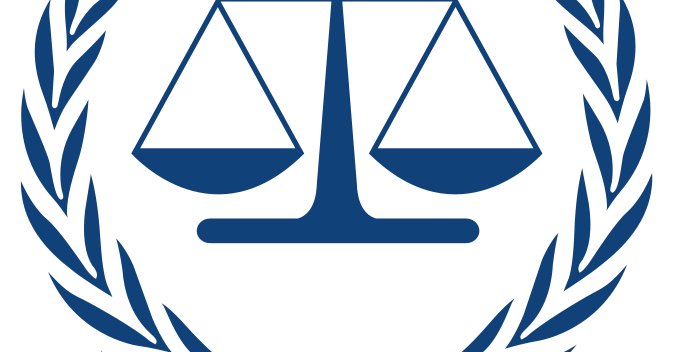“For nearly a half a century — almost as long as the United Nations has been in existence — the General Assembly has recognized the need to establish such a court to prosecute and punish persons responsible for crimes such as genocide. Many thought that the horrors of the Second World War — the camps, the cruelty, the exterminations, the Holocaust — could never happen again. And yet they have. In Cambodia, in Bosnia and Herzegovina, in Rwanda. Our time — this decade even— has shown us that man’s capacity for evil knows no limits. Genocide is now a word of our time too, a heinous reality that calls for a historic response”
Koffi Annan, then UN Secretary-General
This year marks the 10th anniversary of the Diplomatic Conference in Rome that established the International Criminal Court — a major step in the creation of world law [1]. Citizens of the world have usually made a distinction between international law as commonly understood and world law. International law has come to mean laws that regulate relations between States, with the International Court of Justice — the World Court in The Hague — as the supreme body of the international law system. The International Court of Justice is the successor to the Permanent Court of International Justice that was established at the time of the League of Nations following the First World War. When the United Nations was formed in 1945, the World Court was re-established as the principal judicial organ of the UN. It is composed of 15 judges who are elected by the UN General Assembly and the Security Council.
Only States may be parties in cases before the World Court. An individual cannot bring a case before the Court, nor can a company although many transnational companies are active at the world level. International agencies that are part of the UN system may request advisory opinions from the Court on legal questions arising from their activities but advisory opinions are advisory rather than binding.
The “World Law”
Citizens of the world have tended to use the term “world law” in the sense that Wilfred Jenks, for many years the legal spirit of the International Labour Organization, used the term the common law of mankind: “By the common law of mankind is meant the law of an organized world community, contributed on the basis of States but discharging its community functions increasingly through a complex of international and regional institutions, guaranteeing rights to, and placing obligations upon, the individual citizen, and confronted with a wide range of economic, social and technological problems calling for uniform regulation on an international basis which represents a growing proportion of the subject-matter of the law.” It is especially the ‘rights and obligations’ of the individual person which is the common theme of world law.
By the common law of mankind is meant the law of an organized world community
The growth of world law has been closely related to the development of humanitarian law and to the violations of humanitarian law. It was Gustave Moynier, one of the founders of the International Committee of the Red Cross (ICRC) and a longtime president of the ICRC who presented in 1872 the first draft convention for the establishment of an international criminal court to punish violations of the first Red Cross standards on the humane treatment of the sick and injured in periods of war, the 1864 Geneva Convention. The Red Cross conventions are basically self-enforcing. “If you treat my prisoners of war well, I will treat yours the same way.” Governments were not willing to act on Moynier’s proposition, but Red Cross standards were often written into national laws.
The Red Cross Geneva conventions deal with the way individuals should be treated in time of war. They have been expanded to cover civil wars and prisoners of civil unrest. The second tradition of humanitarian law arises from the Hague Conventions of 1899 and 1907 and deals with the weapons of war and the way war is carried on. Most of the Hague rules, such as the prohibition against bombarding undefended towns or villages, have fallen by the side, but the Hague spirit of banning certain weapons continues in the ban on chemical weapons, land mines and soon, cluster weapons. However, although The Hague meetings made a codification of war crimes, no monitoring mechanisms or court for violations was set up.
After the First World War, Great Britain, France and Belgium accused the Central Powers, in particular Germany and Turkey of war atrocities such as the deportation of Belgian civilians to Germany for forced labor, executing civilians, the sinking of the Lusitania and the killing of Armenians by the Ottoman forces. The Treaty of Versailles, signed in June 1919 provided in articles 227-229 the legal right for the Allies to establish an international criminal court. The jurisdiction of the court would extend from common soldiers to military and government leaders. Article 227 deals specifically with Kaiser Wilhelm II, underlining the principle that all individuals to the highest level can be held accountable for their wartime actions. However, the USA opposed the creation of an international criminal court both on the basis of State sovereignty and on the basis that the German government had changed and that one must look to the future rather than the past.
The same issues arose after the Second World War with the creation of two military courts — the International Military Tribunal at Nuremberg and the International Military Tribunal for the Far East. Some have said that these tribunals were imposing ‘victors’ justice on their defeated enemies, Germany and Japan. There was no international trial for Italians as Italy had changed sides at an opportune time, and there were no prosecutions of Allied soldiers or commanders.
In the first years of the United Nations, there was a discussion of the creation of an international court. A Special Committee was set up to look into the issue. The Special Committee mad a report in 1950 just as the Korean War had broken out, marking a Cold War that would continue until 1990, basically preventing any modifications in the structure of the UN.
Thus, during the Cold War, while there were any number of candidates for a war crime tribunal, none was created. For the most part national courts rarely acted even after changes in government. From Stalin to Uganda’s Idi Amin to Cambodia’s Pol Pot, war criminals have lived out their lives in relative calm..
It was only at the end of the Cold War that advances were made. Ad hoc international criminal courts have been set up to try war crimes from former Yugoslavia, Rwanda, and Sierra Leone. Just as the Cold War was coming to an end, certain countries became concerned with international drug trafficking. Thus in 1989, Trinidad and Tobago proposed the establishment of an international court to deal with the drug trade. The proposal was passed on by the UN General Assembly to the International Law Commission, the UN’s expert body on international law. By 1993, the International Law Commission made a comprehensive report calling for a court able to deal with a wider range of issues than just drugs — basically what was called the three ‘core crimes’ of genocide, crimes against humanity and war crimes.
By the mid-1990s, a good number of governments started to worry about world trends and the breakdown of the international legal order. The break up of the federations of the USSR and Yugoslavia, the genocide in Rwanda, the breakdown of all government functions in Somalia, the continuing north-south civil war in Sudan — all pointed to the need for legal restraints on individuals. This was particularly true with the rise of non-State insurgencies. International law as law for relations among States was no longer adequate to deal with the large number on non-State actors.
By the mid-1990s, the door was open to the new concept of world law dealing with individuals, and the drafting of the statues of the International Criminal Court went quickly. There is still much to be done to develop the intellectual basis of world law and to create the institutions to structure it, but the International Criminal Court is an important milestone.


Follow the comments: |
|
